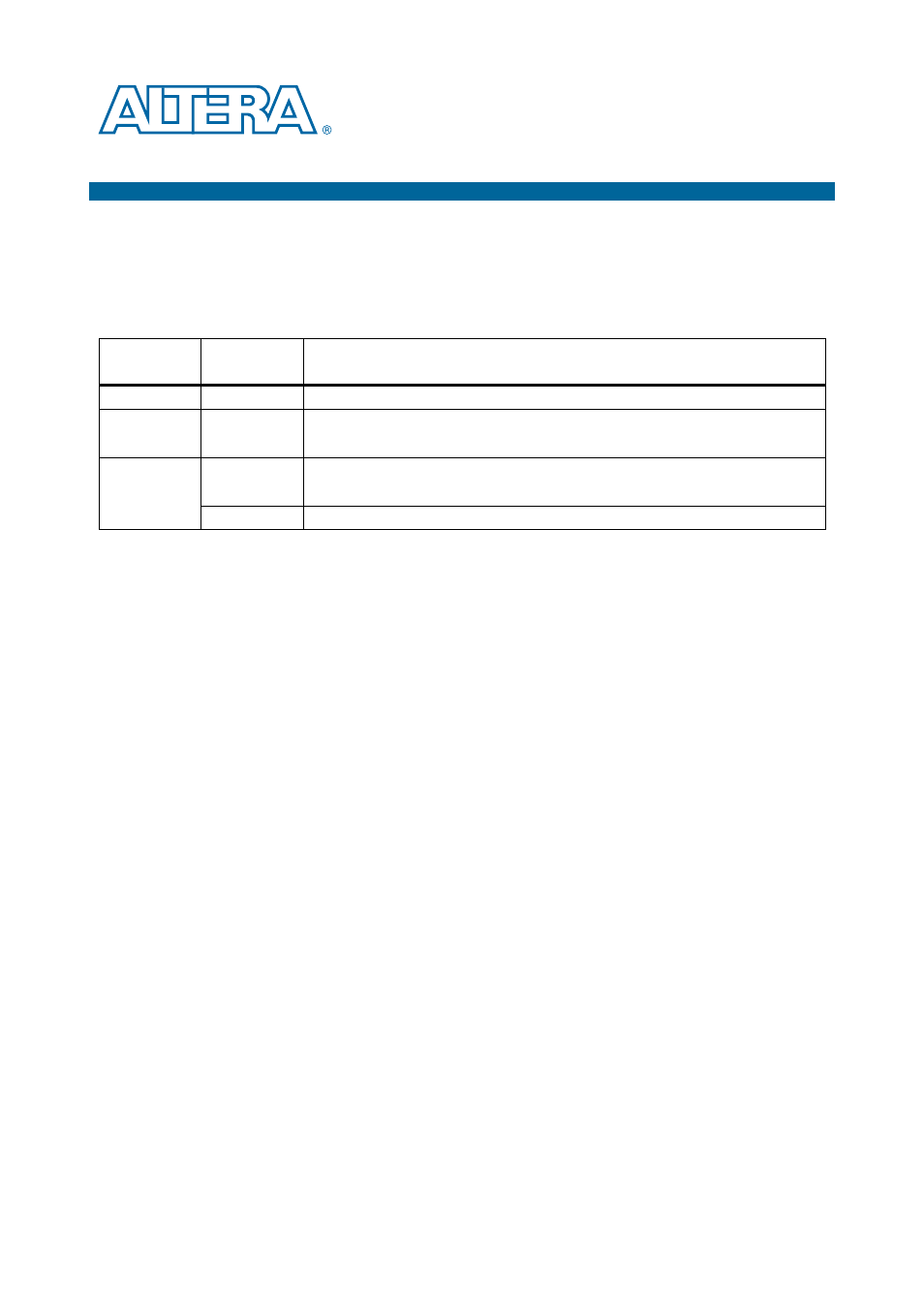C. optimum frequency for rxsys_clk, Of the, Appendix c – Altera POS-PHY Level 4 IP Core User Manual
Page 115: Optimum frequency for rxsys_clk, Chapter c, optimum, Frequency for rxsys_clk

December 2014
Altera Corporation
POS-PHY Level 4 IP Core User Guide
C. Optimum Frequency for rxsys_clk
The IP core’s protocol logic and all Atlantic FIFO buffers share a common clock called
rxsys_clk
that clocks both the write and read sides of the Atlantic FIFO buffers.
Table C–1
shows the rxsys_clk clock frequency restrictions.
Restriction (a) is imposed by the SOP alignment block, which moves the SOP for each
packet into the first-byte position. This move slows the pipeline and temporarily fills
up the alignment buffer. If the higher frequency requirement is not met, the alignment
buffer may overflow. To guarantee correct system operation, the smallest expected
packet size should be used, and the assumption that the IP core is receiving a constant
stream of packets is made.
Restriction (b) comes from the status generation. The IP core requires one clock cycle
more than the length of the status frame to generate a status frame. This cycle is added
on the rxsys_clk domain, thus it must be faster than rsclk. If this requirement is not
met, the IP core does not operate correctly, err_ry_stat_fifo is asserted periodically,
and the status generated is invalid. The worst case is the minimum length status
frame which is three cycles long, giving a ratio of 4/3.
For example, consider a 128-bit IP core with an LVDS data rate of 800 Mbps, using a
single port, a calendar length of 1, and a calendar multiple of 1. For this example,
rdint_clk
= rsclk = 100 MHz.
For a minimum packet size of 48 bytes, the required frequency for rxsys_clk from
restriction (a) is:
C1 = (48 +2) /16 = 3.125
Required rxsys_clk frequency [Ceiling (3.1251) / 3.125] × 100 = (4/3.125) × 100
= 128 MHz
The required frequency from restriction (b) is:
Status Frame Length = 3
rxsys_clk
frequency 100 × (3+1) /3 = 100 × 4/3 = 133.34 MHz
For this example, rxsys_clk 133.34 MHz
Table C–1. rxsys_clk Frequency Restrictions
Data Path
Width (Bits)
Restriction
Label
Restriction
32
a
rxsys_clk
frequency
rdint_clk frequency
64
a
rxsys_clk
frequency
[Ceiling (C1) / C1] × rdint_clk frequency
where C1 = (Packet Length +2)/8
(1)
128
a
rxsys_clk
frequency
(Ceiling (C1, 1) / C1) × rdint_clk frequency
where C1 = (Packet Length +2)/16
(1)
b
rxsys_clk
frequency
rsclk × (Status Frame Length + 1)/(Status Frame Length)
Note to
Table C–1
:
(1) For packet lengths
16 bytes, C1 = 1.
